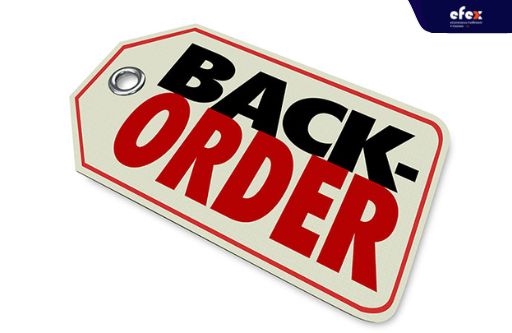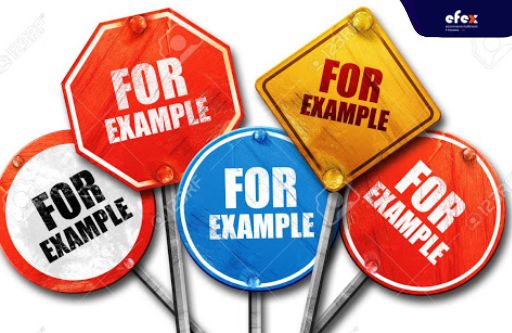
More Helpful Content
The backorder cost is a condition that is not the business you want to have. It is both an unnecessary source of spending and also reflects inefficiencies in inventory management and market demand anticipation. In this article, we will discuss the definition, the meaning of the backorder cost, and what methods to reduce this cost.
Backorder cost is the expense a company incurs in the event that an order cannot be met. The company still has to fulfill that order after that. This cost will include both the actual and perceived costs of not completing an order such as interest charges, negative customer relationships, and other costs that may arise. Backorder cost is usually calculated and presented per unit. It is also sometimes considered a penalty.

Backorder costs are important to measure because the relationship between the cost of the backorder and the cost of inventory is for business owners to evaluate and decide if a company should produce multiple products or fewer products.
However, many of the costs of ordering are intangible. Customers can become dissatisfied and turn to your competitors' services. Inventory orders can also demonstrate inventory management weaknesses that your business needs to overcome.
👉 Read More: Probability Of Stockout: Formula And Calculation

In the case of a sudden increase in customer buying demand, many businesses will consider it a big challenge. On the other hand, after taking into account the actual and intangible costs that you have to pay, you may be able to spot order issues that can indicate the quality of existing warehouse management. purchase behavior as well.
Therefore, calculating the percentage of orders that have been fully shipped is also a method to evaluate the effectiveness of customer service that many businesses use.

Improving market prediction accuracy is one of the strategic methods you can use to minimize the backorders, although it is not easy to do so. The advice for this is to implement a supply chain planning system with the integration of automated forecasting algorithms.
To estimate future market demand, a Supply Chain Planning (SCP) system using prior demand and the algorithm that best matches the specific type of use of the item will be an effective strategy. Not to mention, the market knowledge from salespeople and marketing campaigns should also be incorporated into the SCP system to further enhance predictability.
The next approach to reducing backorders is to use Ready to Promise (ATP) when ordering. ATP is a tool with the role of predicting when the inventory is enough to meet the market demand. By using the available inventory information and the phased supply and demand, you get a more streamlined plan for optimizing backlog. Except in bad cases, this method will help businesses get the most thoughtful and reasonable preparation.
In some cases, the consignment of goods to a customer's facility may be an option. When necessary, the customer withdraws from the existing stock and the company can respond to the demand when the existing balance reaches a predetermined reorganization point.
We will first assume that this joint model allows for pre-order and out-of-stock stocking. In addition, the company's sales are not sold out due to being out of stock. We will also re-order any need that is not met.
Annual Setup Cost + Annual Holding Cost + Annual Backordering Cost = Total Annual Cost Cost of annual setup (ordering)
= (D/Q).S Annual Operating Cost
= (Average Inventory Level).H
We can deduce from the graphical ratios that T1/T= (Q-b)/Q
As a result, if we replace T1/T in the above equation, we get Backorder Inventory Model Average Inventory Level = (Q-b) 2/2Q
👉 Read More: Cash Conversion Cycle Problems And Solutions
It demonstrates how successfully the firm maintains its inventory and clients, as well as how well it communicates with its customers in order to keep them. Backorder examples include the following:

Company A sells a variety of shoes online. At Christmas, the company offers a 30% discount on all types of shoes in the online store and receives an unusual volume of orders: 3,000 orders in the first 2 hours. But currently, the company can only handle 2000 orders and it takes nearly a week to complete the remaining 1,000 orders.
While having a product with a large customer pay leads to generating waiting lists is a good signal for the business, it also runs the risk of actual costs associated with not having the item to deliver to the customer that a company will incur.
Some of the more common costs can be listed. For example, to meet a sufficient number of orders, Company A will have to spend more money on express transportation to move goods from the supplier to the warehouse faster. Then, to speed up production, it can pay its workers a lot of money during overtime.
👉 Read More: Demand Signal: Definition, Process and Benefit
Mr. B wants to buy 15 tables from the dealer, but dealers have only 8 in stock. If Mr. B still wants to buy, he will receive 8 in advance and wait for the remaining 7 tables. The time for the supplier to deliver to the agent 7 tables is 2 months so Mr. B will have to wait 2 months. So here Mr. B has two choices.
The first option is to be able to pre-purchase 8 tables at a dealer and wait for the remaining 7 tables in the next 2 months.
The second option is if Mr. B is in need of a folding table, he can take 8 tables first and ask the agent to give him the remaining 7 tables in 3 weeks, or else he will cancel the order. there.
In this case, in order to retain customers and competitive factors, the agent will be forced to have solutions to fulfill Mr. B.'s wishes.
Backorder costs are an important metric for businesses to track as they indicate inefficiencies in inventory management and demand forecasting. While some backorders are inevitable, companies should aim to minimize them through better supply chain planning, readiness to promise tools, and maintaining safety stock.
Reducing backorders improves customer satisfaction, reduces expenses related to expedited shipping and overtime labor, and decreases the risk of losing sales to competitors. By implementing automated forecasting algorithms, incorporating sales knowledge into predictions, and allowing some customer on-site inventory, companies can significantly cut down on their backorder rates.
Tracking backorder expenses and rates also helps identify problem areas to target process improvements. Overall, proactively managing and reducing backorders should be a priority for operations, inventory, and finance leaders seeking to boost profits and customer retention.


